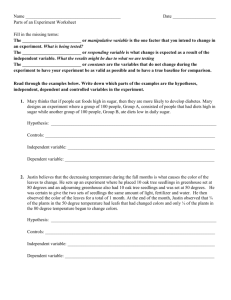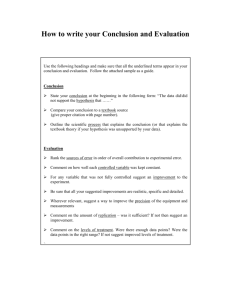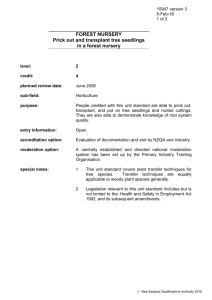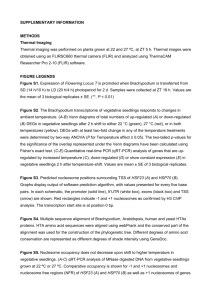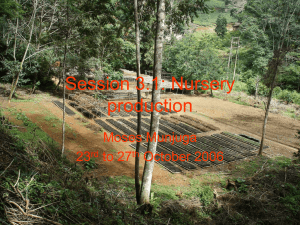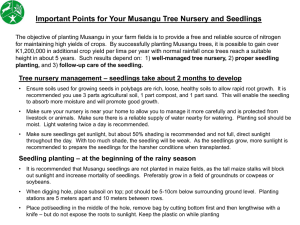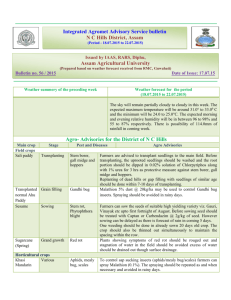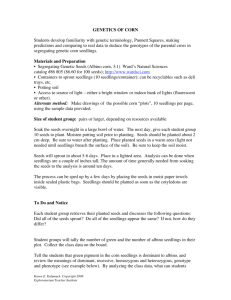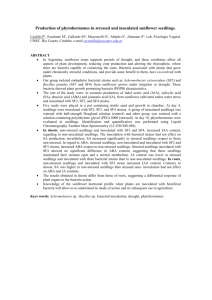tpj12919-sup-0014-Legends
advertisement
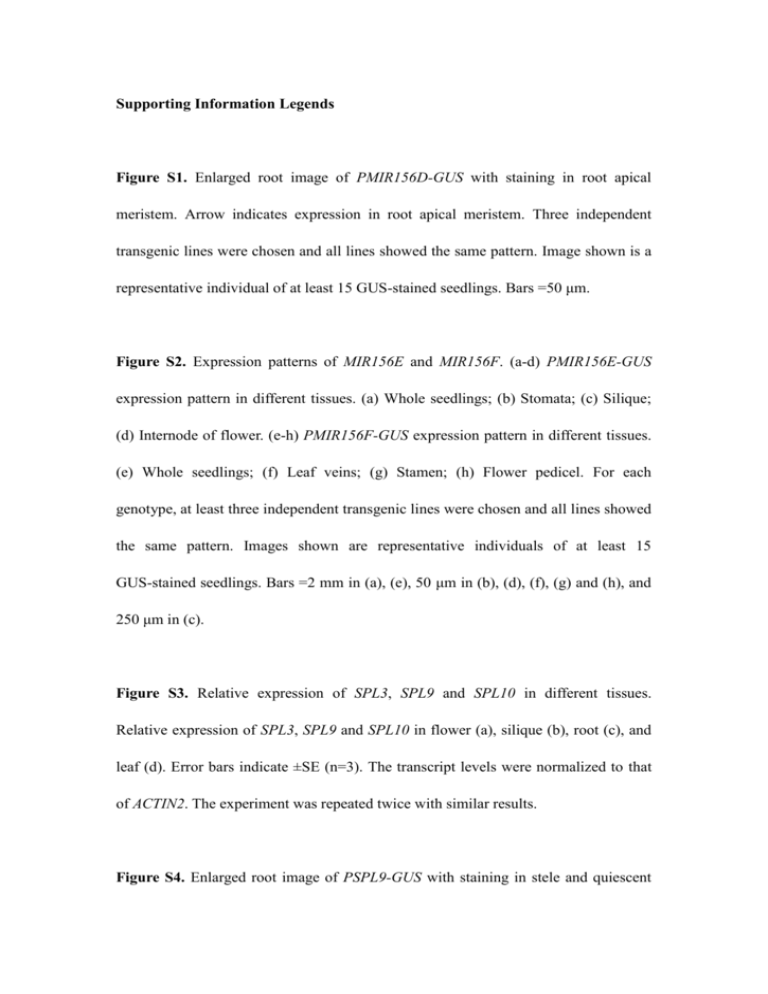
Supporting Information Legends Figure S1. Enlarged root image of PMIR156D-GUS with staining in root apical meristem. Arrow indicates expression in root apical meristem. Three independent transgenic lines were chosen and all lines showed the same pattern. Image shown is a representative individual of at least 15 GUS-stained seedlings. Bars =50 μm. Figure S2. Expression patterns of MIR156E and MIR156F. (a-d) PMIR156E-GUS expression pattern in different tissues. (a) Whole seedlings; (b) Stomata; (c) Silique; (d) Internode of flower. (e-h) PMIR156F-GUS expression pattern in different tissues. (e) Whole seedlings; (f) Leaf veins; (g) Stamen; (h) Flower pedicel. For each genotype, at least three independent transgenic lines were chosen and all lines showed the same pattern. Images shown are representative individuals of at least 15 GUS-stained seedlings. Bars =2 mm in (a), (e), 50 μm in (b), (d), (f), (g) and (h), and 250 μm in (c). Figure S3. Relative expression of SPL3, SPL9 and SPL10 in different tissues. Relative expression of SPL3, SPL9 and SPL10 in flower (a), silique (b), root (c), and leaf (d). Error bars indicate ±SE (n=3). The transcript levels were normalized to that of ACTIN2. The experiment was repeated twice with similar results. Figure S4. Enlarged root image of PSPL9-GUS with staining in stele and quiescent center. Arrow indicates expression in quiescent center. Three independent transgenic lines were chosen and all lines showed the same pattern. Image shown is a representative individual of at least 15 GUS-stained seedlings. Bars =25 μm. (This is an enlarged image of Figure 2f) Figure S5. Detection of the mature miR156 expression by small RNA blot in roots of 10-d-old seedlings. The mature miR159 was used as a control. Numbers refer to different independent transgenic lines. Figure S6. Quantification of lateral root and leaf numbers in different genotypes. (a) Quantification of lateral root numbers in the indicated genotypes from 10D to 30D under short-day condition (SD). (b, c) Quantification of leaf numbers in the indicated genotypes from 10D to 20D under long-day condition (LD) (b), and from 10D to 30D under short-day condition (SD) (c). (d) Quantification of lateral root numbers in the indicated genotypes from 10D to 30D under short-day condition (SD). (e, f) Quantification of leaf numbers in the indicated genotypes from 10D to 25D under LD (e), and from 10D to 30D under SD (f). Error bars represent standard errors (n=50 seedlings). The experiment was repeated three times with similar results. Figure S7. T-DNA insertion mutants. (a) Schematic diagrams of transcribed regions of SPL3 and SPL10 with long horizontal arrows indicating the promoters, thin lines showing the introns and short arrowheads marking the T-DNA insertion sites. (b) Relative expression of SPL3 in roots of 15-d-old spl3 mutant as compared to the wild-type. (c) Relative expression of SPL10 in roots of 15-d-old spl10 mutant as compared to the wild-type. Figure S8. Quantification of lateral root (LR) meristem size in seedlings from different genotypes. Seeds of the indicated genotypes were germinated and grown for 5 days on solidified 0.2× MS agar medium, and then transferred to plates placed vertically for further 10 days for measurement. LR meristem size was defined according to Perilli and Sabatini (2010) and quantified using number of cells. Error bars represent standard errors (n=35 seedlings). Asterisk means statistical differences, ***, P<0.001; **, P<0.01; *, P<0.05. Reference: Perilli, S. and Sabatini, S. (2010) Analysis of root meristem size development. Methods Mol. Biol., 655, 177–187. Figure S9. Effect of IAA treatments on roots of different PMIR156–GUS lines. PMIR156A-GUS, PMIR156B-GUS, and PMIR156D-GUS seeds were germinated and grown for 5 d on solidified 0.2× MS agar medium and then transferred to plates placed vertically supplemented with or without 10 μM IAA for the indicated times (from 0D to 6D after IAA treatments). Images shown are representative individuals of at least 15 GUS-stained seedlings analyzed under a stereoscope. Bars = 500 μm. Figure S10. The detection of mature miR156 by qRT-PCR after IAA treatment. Seedlings were mock- or IAA-treated (10 μM) in liquid 0.2× MS medium for 24 h. Expression levels of mature miR156 were normalized to that of miR159. Error bars represent standard errors (n=3). Figure S11. Effect of IAA treatments on seedling expression of different PMIR156–GUS lines. 15-d-old whole seedlings of PMIR156A-GUS and PMIR156B-GUS lines were treated with or without 10 μM of IAA for 24 h in liquid MS medium and then stained for GUS expression for 4 h. Images shown are representative individuals of at least 15 GUS-stained seedlings analyzed under a stereoscope. For each genotype, at least 2 transgenic lines were analyzed. Bars = 1 mm. Figure S12. Relative expression of SPL3 in roots of 5- and 10-d-old P35S:rSPL3 seedlings after IAA treatment. Seedlings were mock- or IAA-treated (10 μM) in liquid 0.2× MS medium for 24 h. The transcript levels were normalized to that of ACTIN2, Relative expression levels of mock-treated seedlings were set as 1.0. Error bars represent standard errors (n=3). Supplemental Table S1. Primers used in this study.
